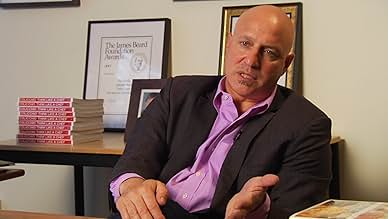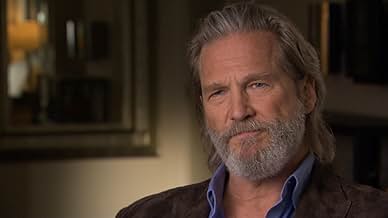IMDb RATING
6.9/10
1.2K
YOUR RATING
A documentary that investigates incidents of hunger experienced by millions of Americans, and proposed solutions to the problem.A documentary that investigates incidents of hunger experienced by millions of Americans, and proposed solutions to the problem.A documentary that investigates incidents of hunger experienced by millions of Americans, and proposed solutions to the problem.
- Awards
- 1 win & 2 nominations total
Jim McGovern
- Self
- (as James McGovern)
Featured reviews
My wife and I downloaded this from iTunes today and were so impacted by the film. The film follows several people of different races and backgrounds, urban to the South to the mountains of Colorado. All are working (as the film goes on) but none make enough to buy enough food to be sure it will last all month. Many of them do not even qualify for food stamps/bridge cards. The fact that the poor and hungry have little lobbying impact in Washington compared to the gigantic agribusiness flood of money is clearly part of the reason we see this dilemma where the richest large nation fails miserably in keeping its working poor feed. Please see this film if you care about this issue. Many of your opinions may turn out to be misconceptions founded on stereotypes.
As for Marc Newman's criticism, the idea that charity organizations like food kitchens and food banks sponsored by churches (yes, those clips of devoted pastors and churches were kept in and were very impressive) could solve this problem is ludicrous. We are talking about 50 million people and 13 million children. As my pastor (who is VERY conservative) says... the problem is overwhelming. There is no way volunteer and charitable organizations can meet the demand, and for Mr. Newman to suggest it could makes me wonder if he has ever worked at trying to get food to the poor. Many of us have done so and we know how huge this problem is... far beyond the resources of the faith community. As was noted in this documentary, the government once before almost totally eliminated hunger (in the late 70's) when both Democrats and Republicans (including Ronald Reagan) made it a priority. The government could do it again if it desired.
As for Marc Newman's criticism, the idea that charity organizations like food kitchens and food banks sponsored by churches (yes, those clips of devoted pastors and churches were kept in and were very impressive) could solve this problem is ludicrous. We are talking about 50 million people and 13 million children. As my pastor (who is VERY conservative) says... the problem is overwhelming. There is no way volunteer and charitable organizations can meet the demand, and for Mr. Newman to suggest it could makes me wonder if he has ever worked at trying to get food to the poor. Many of us have done so and we know how huge this problem is... far beyond the resources of the faith community. As was noted in this documentary, the government once before almost totally eliminated hunger (in the late 70's) when both Democrats and Republicans (including Ronald Reagan) made it a priority. The government could do it again if it desired.
A Place at the Table is a documentary that looks at hunger in America. The film follows several families and their struggles to fill their plates day after day. Band-aid fixes are just not cutting it. The problem of hunger in America is just getting worse. The film is a sobering look at the reality that many Americans face.
In 2008, the world was greeted with, what has been called, one of the most startling and frightening documentaries ever made. It was Robert Kenner's Food, Inc., an acclaimed, highly-regarded, Academy Award nominated account of the horribly corrupt, unsanitary practices of the American food industry. It was a film that told a lot of facts, but used much of its material as an effort to scare the American public, while presenting it as a problem with no conceivable solution. Also, its own talking point, about how America should overhaul its heavily-preserved, pesticide-ridden food in favor of a greener, more organic lifestyle, was one it didn't really back up. As a documentary as a whole, it did its job (to inform me as a viewer), and I was happy to have seen it. I just wished I had seen it when it was followed by a filmmaker Q&A where I could've asked those involved how did they expect the American people who were on welfare, minimum wage, and food stamps to convert to a life predominately consisting of organic food products?
And now, we have A Place at the Table, a documentary focusing on that same group of people, which has been depressingly expanding for years on end. We open with exterior shots of various big cities in the United States, before closing in on a smaller one, Collbran, Colorado a western, rural land comprised of humble, desperate folk who are struggling to make ends meet. We see a church organization member recall how when he started serving hot meals to the public, where anyone can come and eat for free, on Wednesday night, an unprecedented eighty to one-hundred and twenty people showed up. It was a large indication that many people in Collbran were not just desperate for frivolous things, but for something they can't live without.
We then expand to other various cities, such as Jonestown, Mississippi, one of the many American towns that suffers from food insecurity. That is when the public, or its townspeople, do not know where they next meal will come from. Think long and hard about where yours will. Mine will likely be a home-cooked meal, with meat, one or two sides, a salad, and a drink. Many Americans, even children, will be lucky to get one of those things.
Another term defined in the documentary is locations ominously called "food deserts," which are areas where places that carry healthy food packing nutrition, vitamins, and necessary fulfillment don't exist for miles on end, leaving the only resources to be from local stop-and-shops that stock up on food filled with unhealthy fats and empty calories. I was raised where a salad accompanied almost every meal, seemingly by law, not by choice. Seeing young children who have likely never eaten a radish, a cucumber, lettuce, or an onion in their lives is a stunningly upsetting.
Statistics are batted off quite frequently, saying that one in two children will grow up on food stamps in the United States, 30% of people suffer from food insecurity, and currently, over fifty million people in the United States are underfed and undernourished. One of the earliest statistics seems contradictory, but will come as no surprise after a few seconds; Mississippi is the most obese state in the country and it's also the most unfed. Vegetables, again, are difficult to access in many areas, so food that stocks gas station shelves like chips, Cheetos, cupcakes, and hot dogs and sausage that spend nearly half its time on a warming tray are usually what's for dinner. It's, too, widely known that people receiving government aid and food stamps can not afford to spend much of their cash on "luxury items" such as vegetables, because it needs to get them through the month. The government has long subsidized corn, soybean, and wheat products, and has neglected to back vegetables and nourishing products with the same political commodities, we're told. "For years, we've been subsidizing the wrong foods," says Marion Nestle, a food professor.
Just a few days ago, I was talking with a friend and spoke the thought that if we lived in a perfect world, wouldn't basic necessities such as food and clothing, in their simple sense, of course, be free to the public? Wouldn't thinks like milk, bread, and corn be available on a no-cost basis to the consumer. The key words were "in a perfect world." in the world we currently inhabit, prices are sky-rocketing for the stuff we should eat and plummeting on the stuff we shouldn't. You, dear reader, reading this review, send me a picture of a sign that boasts in big, bold primary colors vegetables for an amount equivalent to the price of a two-liter bottle of soda or a bag of Lays potato chips.
A Place at the Table, again, doesn't offer many solutions to this problem, but they are quick to point out what is currently being done in the favor of stopping hunger in a country where there's more than enough healthy food to go around. Food banks, charities, and pantries, which have increased from two-hundred nationwide to a whooping 40,000 in thirty years, have been turning up to temporarily combat the problem, but a functional, long term solution is still in the works. American actor Jeff Bridges, who is responsible for founding the organization called the End Healthy Network in efforts to assist starving kids and adults, poignantly states, "if another country was doing this to our kids, we would be at war. It's just insane."
Full review at http://stevethemovieman.proboards.com
And now, we have A Place at the Table, a documentary focusing on that same group of people, which has been depressingly expanding for years on end. We open with exterior shots of various big cities in the United States, before closing in on a smaller one, Collbran, Colorado a western, rural land comprised of humble, desperate folk who are struggling to make ends meet. We see a church organization member recall how when he started serving hot meals to the public, where anyone can come and eat for free, on Wednesday night, an unprecedented eighty to one-hundred and twenty people showed up. It was a large indication that many people in Collbran were not just desperate for frivolous things, but for something they can't live without.
We then expand to other various cities, such as Jonestown, Mississippi, one of the many American towns that suffers from food insecurity. That is when the public, or its townspeople, do not know where they next meal will come from. Think long and hard about where yours will. Mine will likely be a home-cooked meal, with meat, one or two sides, a salad, and a drink. Many Americans, even children, will be lucky to get one of those things.
Another term defined in the documentary is locations ominously called "food deserts," which are areas where places that carry healthy food packing nutrition, vitamins, and necessary fulfillment don't exist for miles on end, leaving the only resources to be from local stop-and-shops that stock up on food filled with unhealthy fats and empty calories. I was raised where a salad accompanied almost every meal, seemingly by law, not by choice. Seeing young children who have likely never eaten a radish, a cucumber, lettuce, or an onion in their lives is a stunningly upsetting.
Statistics are batted off quite frequently, saying that one in two children will grow up on food stamps in the United States, 30% of people suffer from food insecurity, and currently, over fifty million people in the United States are underfed and undernourished. One of the earliest statistics seems contradictory, but will come as no surprise after a few seconds; Mississippi is the most obese state in the country and it's also the most unfed. Vegetables, again, are difficult to access in many areas, so food that stocks gas station shelves like chips, Cheetos, cupcakes, and hot dogs and sausage that spend nearly half its time on a warming tray are usually what's for dinner. It's, too, widely known that people receiving government aid and food stamps can not afford to spend much of their cash on "luxury items" such as vegetables, because it needs to get them through the month. The government has long subsidized corn, soybean, and wheat products, and has neglected to back vegetables and nourishing products with the same political commodities, we're told. "For years, we've been subsidizing the wrong foods," says Marion Nestle, a food professor.
Just a few days ago, I was talking with a friend and spoke the thought that if we lived in a perfect world, wouldn't basic necessities such as food and clothing, in their simple sense, of course, be free to the public? Wouldn't thinks like milk, bread, and corn be available on a no-cost basis to the consumer. The key words were "in a perfect world." in the world we currently inhabit, prices are sky-rocketing for the stuff we should eat and plummeting on the stuff we shouldn't. You, dear reader, reading this review, send me a picture of a sign that boasts in big, bold primary colors vegetables for an amount equivalent to the price of a two-liter bottle of soda or a bag of Lays potato chips.
A Place at the Table, again, doesn't offer many solutions to this problem, but they are quick to point out what is currently being done in the favor of stopping hunger in a country where there's more than enough healthy food to go around. Food banks, charities, and pantries, which have increased from two-hundred nationwide to a whooping 40,000 in thirty years, have been turning up to temporarily combat the problem, but a functional, long term solution is still in the works. American actor Jeff Bridges, who is responsible for founding the organization called the End Healthy Network in efforts to assist starving kids and adults, poignantly states, "if another country was doing this to our kids, we would be at war. It's just insane."
Full review at http://stevethemovieman.proboards.com
"A Place at the Table" completely transformed my paradigm of America. When I hear the words "hunger" and "starvation," images of ravenous, malnourished, dying children in Africa instantly pop into my head. However, this poignant, simple, and impacting documentary showed me that "hunger" could be sitting right next to me in school. This 84-minute documentary details with moving austerity how and why even in America, the world's richest nation, children are going hungry.
Featuring Academy Award winner Jeff Bridges, the founder of the End Hunger Network, "A Place at the Table" follows people, all from different towns and cultural backgrounds, who are food insecure. In other words, they have no idea when and how their next meal is going to come in. 50 million people in America are food insecure. This not only stunts physical development but mental development as well. Take Rosie, a fifth-grader growing up in rural Colorado. She tries to focus in school, but hunger pains cause her to zone out or to imagine her friends and teachers as fruits. Her dream is that one day, her kids can do what they want to do and what they need to do without going hungry.
Another instance is Barbie, a single working mother with two kids. Her toddler son mumbles and has an attention-deficit symptom. This is because of the lack of food for Barbie and her family when he was born. The lasting effects of hunger in a child's first years impact a child much more deeply in the brain than the body. It's an emotional moment to see Barbie break down into tears in front of her kids, exhausted of the intense struggle to make ends meet.
The documentary grippingly touches on so many different issues. It clears up myths and breaks stereotypes. A false paradigm that America blindly looks through is that hunger doesn't exist because children struggle with obesity. However, obesity, hunger, and being food insecure go hand-in-hand. Because of a low income, families on a very limited budget shop for the cheapest foods in store – chips, cookies, and ice cream. Produce is simply too expensive.
Hunger exists not because there is not enough food. Hunger exists because it isn't a big enough issue on the political agenda. The documentary is packed with real statistics and visuals that are not just standard, cold numbers, but the toll of hunger is shown in the glimpses of families scrambling to break the cycle of poverty. This film calls out to audiences to end hunger in America by alerting politicians and the government. "It's just appalling," says actor Jeff Bridges. "You know if another country was doing this to our kids we would be at war. It's just insane and it doesn't have to be that way."
"A Place at the Table" will truly open your eyes to the harsh realities of a food insecure nation. I am determined to push forward in this fight of ending hunger, and I believe our nation can rise out of the pit we've buried ourselves in. America's youth has a passion and an unbendable will to fight for what's right, and if pointed in the right direction, I believe that the American Dream of prosperity can come true. The only thing standing between now and the extinction of hunger is the hurdle of ignorance, clouding youths' and the government's minds. Share this documentary with friends and family – I recommend this for all ages. If we act with urgency and boldness, perhaps one day, everyone will have a place at the table.
Reviewed by Cassandra Hsiao, KIDS FIRST! Film Critic, age 14. For more reviews, go to kidsfirst.org.
Featuring Academy Award winner Jeff Bridges, the founder of the End Hunger Network, "A Place at the Table" follows people, all from different towns and cultural backgrounds, who are food insecure. In other words, they have no idea when and how their next meal is going to come in. 50 million people in America are food insecure. This not only stunts physical development but mental development as well. Take Rosie, a fifth-grader growing up in rural Colorado. She tries to focus in school, but hunger pains cause her to zone out or to imagine her friends and teachers as fruits. Her dream is that one day, her kids can do what they want to do and what they need to do without going hungry.
Another instance is Barbie, a single working mother with two kids. Her toddler son mumbles and has an attention-deficit symptom. This is because of the lack of food for Barbie and her family when he was born. The lasting effects of hunger in a child's first years impact a child much more deeply in the brain than the body. It's an emotional moment to see Barbie break down into tears in front of her kids, exhausted of the intense struggle to make ends meet.
The documentary grippingly touches on so many different issues. It clears up myths and breaks stereotypes. A false paradigm that America blindly looks through is that hunger doesn't exist because children struggle with obesity. However, obesity, hunger, and being food insecure go hand-in-hand. Because of a low income, families on a very limited budget shop for the cheapest foods in store – chips, cookies, and ice cream. Produce is simply too expensive.
Hunger exists not because there is not enough food. Hunger exists because it isn't a big enough issue on the political agenda. The documentary is packed with real statistics and visuals that are not just standard, cold numbers, but the toll of hunger is shown in the glimpses of families scrambling to break the cycle of poverty. This film calls out to audiences to end hunger in America by alerting politicians and the government. "It's just appalling," says actor Jeff Bridges. "You know if another country was doing this to our kids we would be at war. It's just insane and it doesn't have to be that way."
"A Place at the Table" will truly open your eyes to the harsh realities of a food insecure nation. I am determined to push forward in this fight of ending hunger, and I believe our nation can rise out of the pit we've buried ourselves in. America's youth has a passion and an unbendable will to fight for what's right, and if pointed in the right direction, I believe that the American Dream of prosperity can come true. The only thing standing between now and the extinction of hunger is the hurdle of ignorance, clouding youths' and the government's minds. Share this documentary with friends and family – I recommend this for all ages. If we act with urgency and boldness, perhaps one day, everyone will have a place at the table.
Reviewed by Cassandra Hsiao, KIDS FIRST! Film Critic, age 14. For more reviews, go to kidsfirst.org.
This documentary should be seen by everyone who think that the economic system in the US is a perfect one. It also shows how much the people that actually generates wealth are exploited, just for the record bankers, financiers and the stock-market don't generate wealth, its the people that make products and services that benefit humankind that generates wealth.This of course comes from a guy that most Americans would consider a communist.
It warns about the future problems that the US might face if this type of problem is as prevalent as it depicts( I don't know all the facts behind this film ). If it is accurate then I hope for the people in the US will fix it instead of hope for the stock-market to fix it, it will not do that.
It warns about the future problems that the US might face if this type of problem is as prevalent as it depicts( I don't know all the facts behind this film ). If it is accurate then I hope for the people in the US will fix it instead of hope for the stock-market to fix it, it will not do that.
Did you know
- TriviaThe original title for this documentary was "Hungry in America."
- ConnectionsFeatured in Moyers & Company: United States of ALEC: A Follow-Up (2013)
Details
- Release date
- Country of origin
- Official site
- Language
- Also known as
- Mesto za stolom
- Filming locations
- Collbran, Colorado, USA(main location)
- Production companies
- See more company credits at IMDbPro
Box office
- Gross US & Canada
- $231,378
- Opening weekend US & Canada
- $92,257
- Mar 3, 2013
- Gross worldwide
- $231,378
- Runtime1 hour 24 minutes
- Color
- Aspect ratio
- 1.78 : 1
Contribute to this page
Suggest an edit or add missing content




































